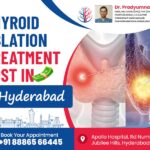Varicose veins are common and can be seen mostly in the legs. Varicose veins appear twisted, blue, and bulged. They occur when the valves in the legs fail to prevent the blood from flowing in a backward direction. As a result, blood gets deposited in the veins and it causes high pressure that vein walls cannot handle. Hence the veins get enlarged and leads to varicose veins.
The treatment for varicose veins focuses on removing or closing the varicose veins. Both minimally invasive and surgical procedures can be used to treat varicose veins.
All About Minimally Invasive Procedures
Several minimally invasive procedures have been developed in recent days to treat varicose veins without the need for surgery. The procedure will be performed by interventional radiologists who specialise in using imaging techniques to treat varicose veins. The following are some of those procedures:
- Venous ablation: The procedure involves sending a catheter into varicose veins and its path is followed using ultrasound. When the tip of the catheter reaches the right position, heat generated through laser fiber or radiofrequency waves will be applied to the interior of the vein to close it off.
- Microphlebectomy: It is also called ambulatory phlebectomy and it involves making small incisions surrounding the vein. A special instrument will be sent into the affected veins through the incisions to remove veins. It is performed along with the venous ablation as a part of the treatment.
- Sclerotherapy: The Sclerotherapy procedure involves injecting a chemical irritant either in the form of liquid or foam into the affected vein. This causes veins to collapse, stick together, and eventually makes veins scar and fade off.
- Endovenous Laser Treatment (EVLT): The EVLT procedure uses a catheter, ultrasound, and laser to treat varicose veins. A small incision will be made to insert the catheter into the varicose veins. An ultrasound is used to direct the catheter towards the vein. Laser heat will be sent to the end of the catheter to heat the walls of the vein and it eventually closes the vein.
Pros and Cons
The minimally invasive procedure offers the following benefits:
- It is effective and venous ablation is effective for 90% to 100% of cases
- Only local anesthesia will be used and there will not be any stitches
- It can be performed on an outpatient basis
The cons of minimally invasive procedures include:
- Additional treatments might be required
- It can show side effects such as infection, bleeding, inflammation of veins
- Blood clots can occur in rare cases
Surgical Procedures for Varicose Veins
Surgical procedures have been used for treating varicose veins for several years and will be performed by a vascular surgeon. The following is the surgical option:
Vein stripping and litigation: During the procedure, you will be given regional anesthesia and medications to sedate you and numb your body. The procedure involves removing the damaged or affected veins. For this, two small cuts will be made near the groin region and blood vessels in the calf. The top of the vein will be tied off by the surgeon and the entire damaged vein will be pulled out from the incision. The incisions will be closed using stitches and bandages.
Pros and Cons
The advantage of a surgical procedure is that it is safe and effective at treating varicose veins.
The disadvantages of the surgical procedure include the following:
- Increases the risk of complications due to sedation
- It is painful and requires a longer time for recovery
- Varicose veins might come back after 5 years
- It may lead to deep vein thrombosis, which occurs in deep veins and can pass to the lungs
Though there are surgical and minimally invasive procedures for varicose veins, you should consult a doctor to know which treatment is suitable for you.
Confused to Choose the Right Treatment for Varicose Veins? Meet Dr Pradyumna Reddy Today
If you or your loved one is suffering from varicose veins and you are confused whether to go with surgical or minimally invasive treatment, meet Dr Pradyumna Reddy today. He has over 6 years of experience as an interventional radiologist and specialises in using minimally invasive procedures. He is trained in all basic & advanced radiology methods and became proficient in Treating Varicose Veins. To schedule your appointment, call us.






